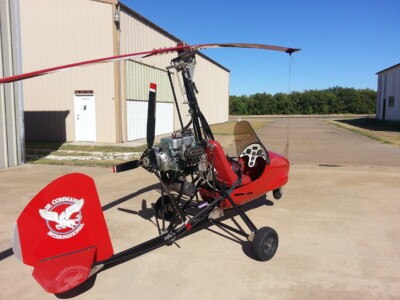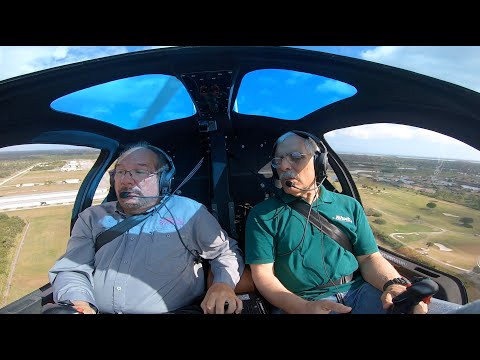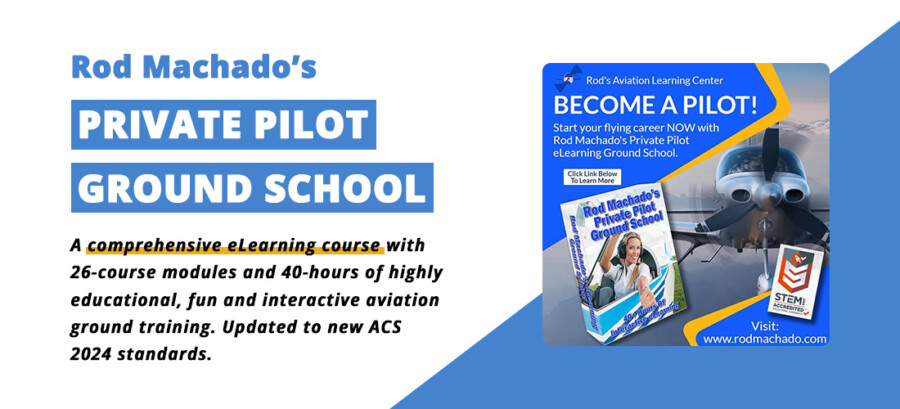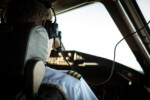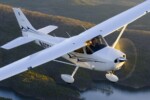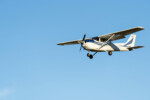How Long Does it Take to Learn to Fly a Gyrocopter?
23 November 2023 | Updated on February 05, 2024
Unlike helicopters, gyrocopters don’t have an engine powering their rotor blades; instead, they utilize an engine-driven propeller and unpowered rotors. This means they can’t hover like helicopters, but they can take off and land in incredibly short distances, making them perfect for small airstrips or even your backyard!
Gyrocopters are known for their stability and safety, thanks to their aerodynamic design. Even if the engine fails, the aircraft can safely glide to the ground, thanks to a phenomenon known as autorotation. This makes them a great choice for beginner pilots or those looking for a safer alternative in the world of aviation.
In this article, we’ll guide you through everything you need to know about learning to fly a gyrocopter in the United States: from the basics of how they work, to the thrill of taking control in the cockpit. Whether you’re a seasoned pilot looking to try something new, or a complete novice drawn to the freedom of the skies, there’s something magical about piloting a gyrocopter. So buckle up, and let’s embark on this exciting journey together!
Important Disclaimer: The information and data provided here are for informational purposes only, and are subject to change over time. We strive to provide the most current and relevant information, but the dynamic nature of the topics discussed may result in changes that are not immediately reflected in our content. We recommend our readers to conduct their own research and consult with professionals when making significant decisions based on the data or information provided here. Your reliance on the information in this post is solely at your own risk.
Key Takeaways:
- Learning to fly a gyrocopter requires a minimum of 40 hours of training.
- This includes 15 hours of dual instruction and 10 hours of solo flying.
- Additional training hours can be completed as needed.
- Students with good aptitude and dedication can expect to train for about 40 to 50 hours.
- It is recommended to spread the training over a period of 6 months to a year for optimal learning.
What are Gyrocopters?
Gyrocopters, also known as autogyros or gyroplanes, are a unique type of rotary-wing aircraft that combine elements of both helicopters and airplanes. At first glance, they might remind you of a small helicopter, but as already mentioned in the introduction, there’s a key difference: gyrocopters do not use an engine to power their rotor blades. Instead, the rotors spin freely in the air through a process called autorotation.
Unlike helicopters, gyrocopters can’t hover in place or take off vertically. They require a short runway for takeoff and landing, much like a traditional airplane. However, their takeoff and landing distances are impressively short compared to those of conventional airplanes.
One of the most striking features of gyrocopters is their rotor system. It’s unpowered during flight, with the rotors spinning due to the oncoming air as the gyrocopter moves forward. This is achieved thanks to the forward thrust provided by a conventional propeller, powered by an engine, usually mounted at the rear of the aircraft.
Gyrocopters are celebrated for their simplicity and safety. In case of engine failure, the gyrocopter doesn’t just fall out of the sky; instead, it can glide to a landing thanks to autorotation. This inherent safety feature, along with their lower cost and ease of operation, makes gyrocopters a popular choice for recreational flying and flight training for aviation enthusiasts.
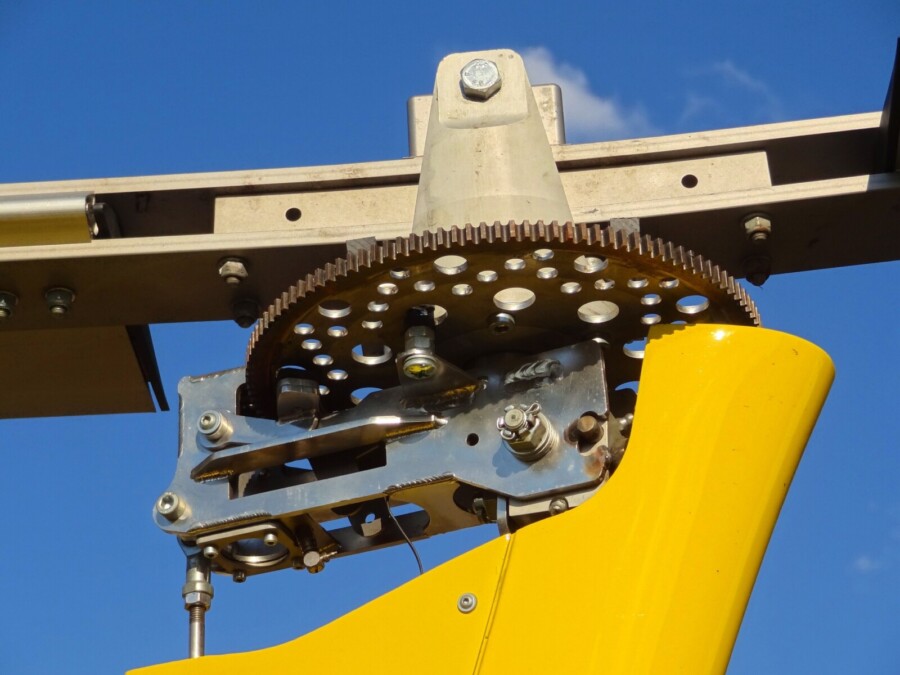

Training Requirements for Pilots with Existing Licenses
If you already hold a Microlight or Fixed-wing license, the required number of training hours is reduced to a minimum of 25 hours. This includes 15 hours of dual instruction and 10 hours of supervised solo flying. These training hours must be completed to obtain a gyroplane endorsement on your existing license. It is important to note that even with a different form of pilot’s license, you will still need to complete the required cross-country navigation exercises specific to gyrocopters.
For licensed pilots, the training requirements are tailored to their previous aviation experience. By building on their existing knowledge and skills, the training time can be significantly reduced. The focus of the training is on mastering the unique aspects of gyrocopter flight, such as rotor management and low-speed handling. The goal is to ensure that licensed pilots have the necessary skills and knowledge to operate gyrocopters safely and confidently.
Obtaining a gyroplane endorsement on an existing license is an efficient way for licensed pilots to expand their flying capabilities. It allows them to enjoy the freedom and versatility of gyrocopter flight while leveraging their existing aviation experience. By completing the required training hours and demonstrating proficiency, licensed pilots can add a new dimension to their flying adventures.
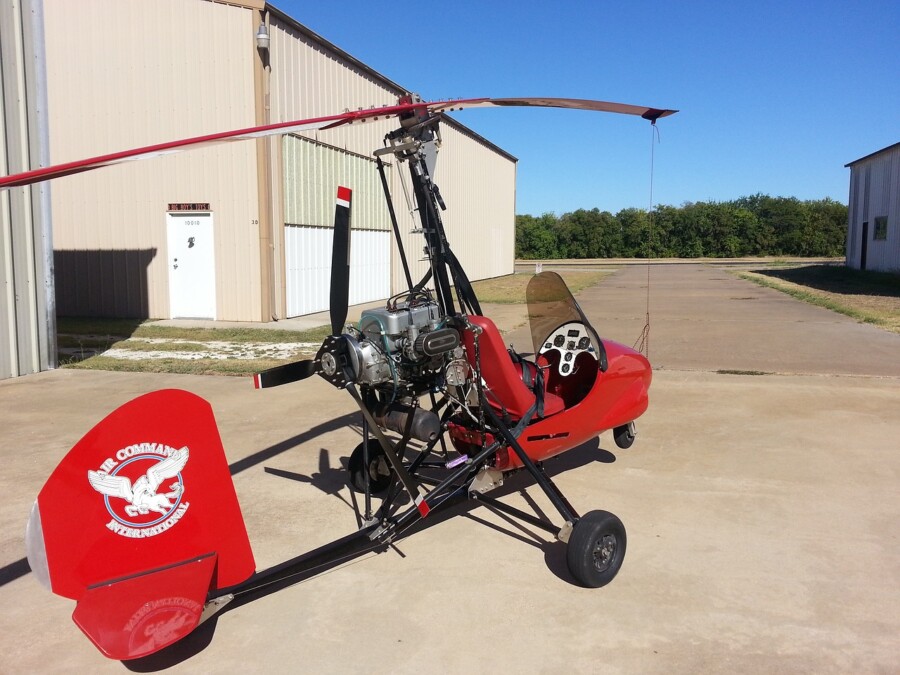

Steps to Obtain a Gyrocopter License
To apply for a gyrocopter license, there are several requirements that you must fulfill. These steps ensure that you have the necessary skills and knowledge to safely operate a gyrocopter:
1. Dual Training Hours
You must complete a minimum of 15 hours of dual instruction with a qualified gyrocopter instructor. During this time, you will learn the fundamentals of flying, including basic flight maneuvers and emergency procedures.
2. Solo Training Hours
After completing the dual training hours, you will need to accumulate a minimum of 10 hours of supervised solo flying. This allows you to gain confidence and practice your skills without the presence of an instructor.
3. Overall Minimum Training Hours
In addition to the dual and solo training hours, you must complete the overall minimum number of training hours required for a gyrocopter license. This is 40 hours if you don’t hold any kind of pilot’s license already, or 25 hours if you hold a PPL(H), a PPL(A), an NPPL(A), or NPPL(M).
4. Cross-Country Exercises
As part of your training, you will need to complete two cross-country exercises where you navigate to and land at other airfields. This ensures that you are competent in planning and executing flights to different destinations.
5. General Flying Test (GFT)
You will be required to pass a General Flying Test (GFT) conducted by a CAA approved Gyro examiner. This test assesses your flying skills, knowledge of gyrocopter operations, and ability to handle various flight scenarios.
6. Oral Test and Groundschool Exams
In addition to the GFT, you will need to pass an oral test related to the type of gyrocopter you use for your GFT. You will also be required to pass multiple-choice ground school exams on Air Law, Meteorology, Navigation, Human Performance, and Gyroplane Technical, with a passing mark of 70%.
By completing these steps, you will have fulfilled the necessary requirements to obtain a gyrocopter license. It is important to note that the time it takes to complete these steps may vary depending on individual factors such as learning ability, availability, and dedication. Training centers and qualified instructors can provide guidance and support throughout the process.
| Exam Subject | Pass Mark |
|---|---|
| Air Law | 70% |
| Meteorology | 70% |
| Navigation | 70% |
| Human Performance | 70% |
| Gyroplane Technical | 70% |
Solo Flying Requirements and Privileges
When it comes to solo flying in gyrocopters, there are specific requirements that you need to fulfill before obtaining your gyrocopter license. As a student, you must complete at least 10 hours of solo flying under the supervision of a qualified instructor. Out of these 10 hours, a minimum of 3 hours must be flown away from your home airfield, which is known as cross-country flying.
Why is this cross-country flying requirement important? It allows you to gain valuable experience in navigating unfamiliar airspace and landing at different airfields. This kind of flying helps you develop your ability to plan routes, read navigational charts, and make informed decisions while flying solo.
It’s important to note that you can only fly solo with the permission and under the supervision of your instructor. Once you have successfully completed the required solo flying hours and met all the other training criteria, you will be eligible to apply for your gyrocopter license. Upon obtaining your license, you will have the privilege of carrying passengers in your gyrocopter.
| Requirement | Description |
|---|---|
| Solo Flying Hours | Minimum of 10 hours of solo flying under instructor supervision |
| Cross-Country Flying | Minimum of 3 hours of flying away from home airfield |
| Instructor Supervision | Permission and supervision of a qualified instructor during solo flights |
| Passenger Privileges | Ability to carry passengers once you obtain your gyrocopter license |
By meeting the solo flying requirements and earning your gyrocopter license, you will have the freedom to embark on exhilarating solo flights and share the joy of gyrocopter flying with others.
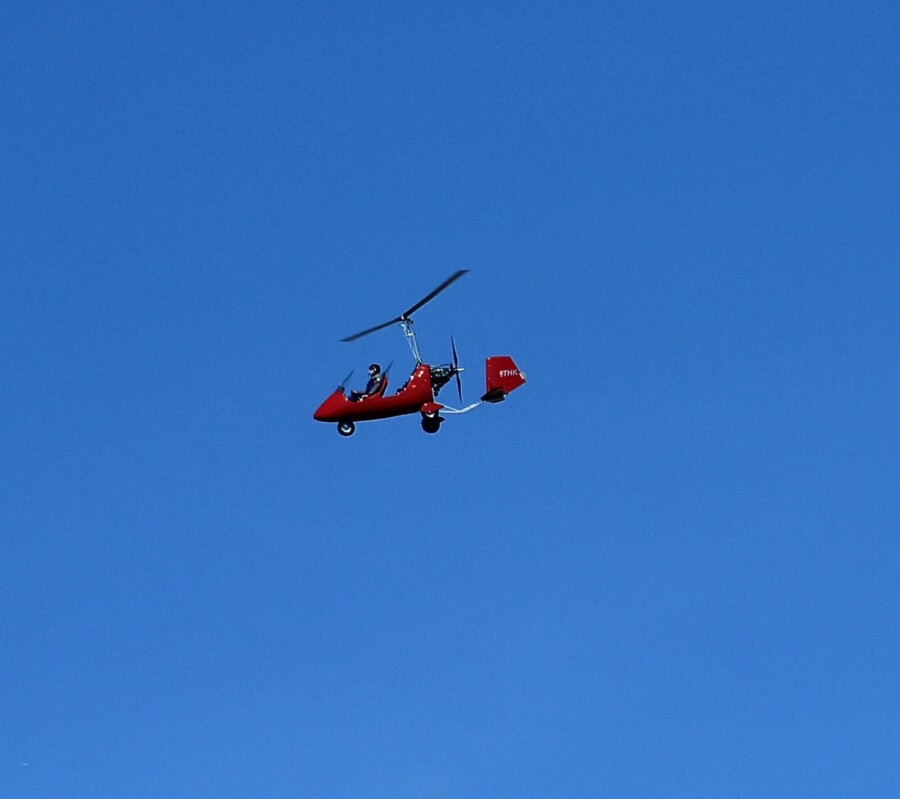

Medical Requirements
Prior to flying solo, gyrocopter pilots must fulfill certain medical requirements to ensure their ability to safely operate an aircraft. Pilots are required to complete a medical self-declaration of health form, which assesses their overall fitness to fly. The details and guidance notes for this form can be found on the Civil Aviation Authority’s (CAA) website.
It is important for pilots to consult with their aviation medical examiner and ensure they meet the necessary medical standards for flying a gyrocopter. These standards consider factors such as vision, hearing, cardiovascular health, and general physical fitness.
By fulfilling the ground exams and medical requirements, aspiring gyrocopter pilots can demonstrate their knowledge and fitness for safe and responsible flying.
Gyrocopter Training Costs
When it comes to pursuing your dream of flying a gyrocopter, it’s important to consider the costs involved. The expenses associated with gyrocopter training can vary depending on factors such as the model of the gyrocopter and the location of the training center. On average, you can expect to pay between $200 to $230 per hour of training.
It’s essential to inquire with different training centers to get specific pricing details based on your location and the type of gyrocopter you plan to train on. Keep in mind that the cost of training is an investment in your skills and safety as a pilot. While it may seem like a significant financial commitment, the knowledge and experience gained through thorough training are invaluable.
Proper training ensures that you are well-prepared to handle the unique challenges of flying a gyrocopter. It equips you with the skills and knowledge necessary to navigate safely and confidently. So, while the cost of gyrocopter training is an important aspect to consider, it’s crucial to prioritize the quality and comprehensiveness of the training program.
Gyrocopter Training for Licensed Pilots
If you are already a licensed pilot with a minimum of a sport pilot rating, you have the opportunity to add a gyroplane endorsement to your existing license. This add-on training requires additional hours of training with a gyroplane Certified Flight Instructor (CFI) and a proficiency check based on the knowledge and proficiency requirements instructed by the CFI. On average, most pilots can complete this add-on training in 10 to 20 hours.
During the gyrocopter training for licensed pilots, you will focus on mastering the specific handling and operating characteristics of gyrocopters. The training will cover essential topics such as understanding the rotor system, mastering takeoff and landing techniques, and practicing emergency procedures unique to gyrocopters.
To ensure a smooth transition, it is crucial to find a qualified gyroplane CFI who can guide you through the add-on training process. They will tailor the training to your specific needs and build on your existing pilot knowledge and skills. The gyrocopter training for licensed pilots will equip you with the necessary knowledge and skills to safely operate gyrocopters and expand your flying horizons.
“Adding a gyroplane endorsement to your licensed pilot status opens up a whole new world of aviation. Gyrocopters offer unique flying experiences, with their ability to fly at low altitudes, maneuverability, and open cockpit design. It’s an exciting opportunity for licensed pilots to explore new perspectives in aviation.”
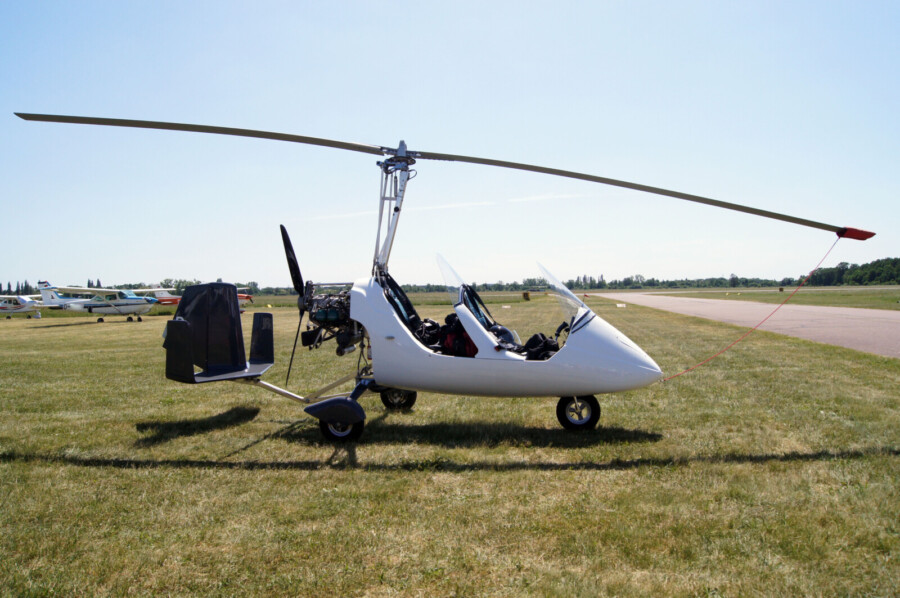

Online Training Resources
If you are looking for convenient and flexible gyrocopter training options, online training resources can be a great solution. One prominent resource in the industry is the International Association of Professional Gyroplane Training (IAPGT). Their online program provides comprehensive guidance for gyrocopter training, allowing you to learn at your own pace and convenience.
The IAPGT online training program covers all the essential areas of gyrocopter training, including theory, practical exercises, and safety procedures. The program is designed to ensure that students receive a thorough understanding of gyrocopter operations and develop the necessary skills to become competent pilots.
With the IAPGT online training program, you’ll have access to instructional videos, interactive quizzes, and practical exercises that simulate real-life flying scenarios. You’ll also have the opportunity to connect with experienced instructors and fellow students through forums and online discussions, enhancing your learning experience.
By choosing online gyrocopter training, you can study at your own pace, fitting your training sessions into your schedule. This flexibility allows you to balance your training with other commitments, making it easier to achieve your goal of becoming a licensed gyrocopter pilot.
Read more on https://www.iapgt.org/
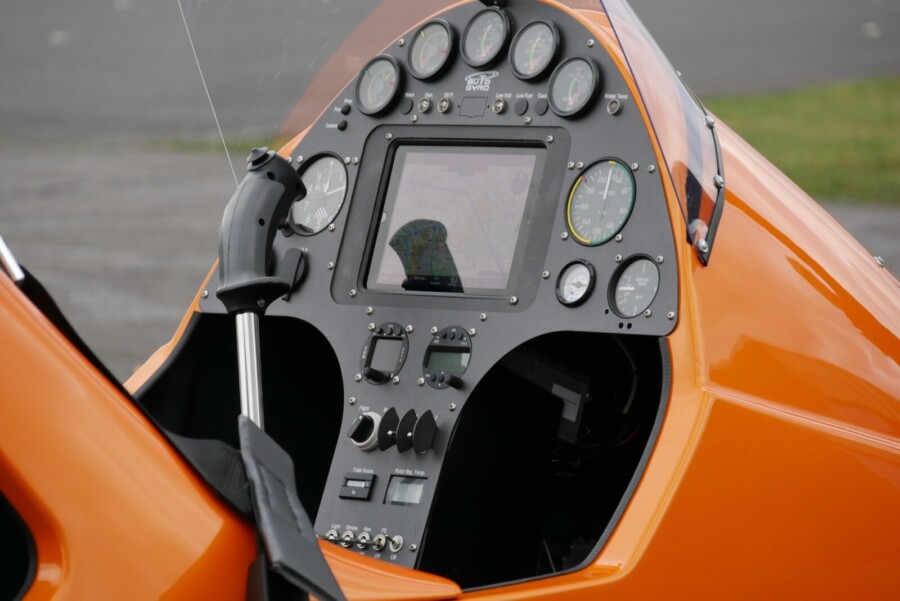

Factors Affecting Training Duration
When it comes to learning to fly a gyrocopter, the duration of your training can be influenced by a variety of factors. One of the key factors is individual learning abilities. Each person has their own unique learning style and pace, which can impact how quickly they grasp the concepts and skills required for gyrocopter flying. Some individuals may pick up the necessary knowledge and techniques faster, while others may require more time and practice to become proficient.
Another factor that can affect training duration is the amount of time and dedication you are able to commit to your training. If you have a busy schedule and can only attend training sessions sporadically, it may take longer to complete the required training hours compared to someone who can train more frequently. Consistency and regular practice are important for building and retaining the necessary skills for gyrocopter flying.
Additionally, external factors such as weather conditions and access to training facilities can also impact training duration. Unfavorable weather conditions can lead to canceled or rescheduled training sessions, delaying your progress. Similarly, limited availability of training facilities or instructors in your area may require you to travel or wait for a suitable training slot, which can prolong the training process.
Conclusion
Learning to fly a gyrocopter requires a minimum of 40 hours of training, including 15 hours of dual instruction and 10 hours of solo flying. The training duration may vary based on individual factors, but dedicating 6 months to a year is a reasonable timeframe. Licensed pilots may have a reduced training requirement of 25 hours.
Passing written exams, completing cross-country exercises, and demonstrating proficiency are essential to obtaining a gyrocopter license. Online training resources and the guidance of a qualified instructor can greatly support the learning process. Effective communication and instruction, along with dedication and enthusiasm, contribute to successful gyrocopter training.
FAQ
How long does it take to learn to fly a gyrocopter?
To learn to fly a gyrocopter, you will need a minimum of 40 hours of training. This includes 15 hours of dual instruction and 10 hours of solo flying. On average, students with good aptitude and dedication can expect to train for about 40 to 50 hours.
What are the training requirements for pilots with existing licenses?
Licensed pilots with a minimum of a sport pilot rating can add a gyroplane endorsement to their existing license. This requires additional training with a gyroplane CFI and a proficiency check based on the knowledge and proficiency requirements instructed by the CFI. On average, most pilots can complete this add-on training in 10 to 20 hours.
What are the steps to obtain a gyrocopter license?
To obtain a gyrocopter license, you must fulfill the following criteria: complete the required number of dual training hours, complete the required number of supervised solo training hours, complete the overall minimum number of training hours, complete two cross-country exercises, pass a General Flying Test (GFT) conducted by a CAA approved Gyro examiner, pass an oral test related to the type of gyro you use for your GFT, and pass multiple-choice groundschool exams on Air Law, Meteorology, Navigation, Human Performance, and Gyroplane Technical.
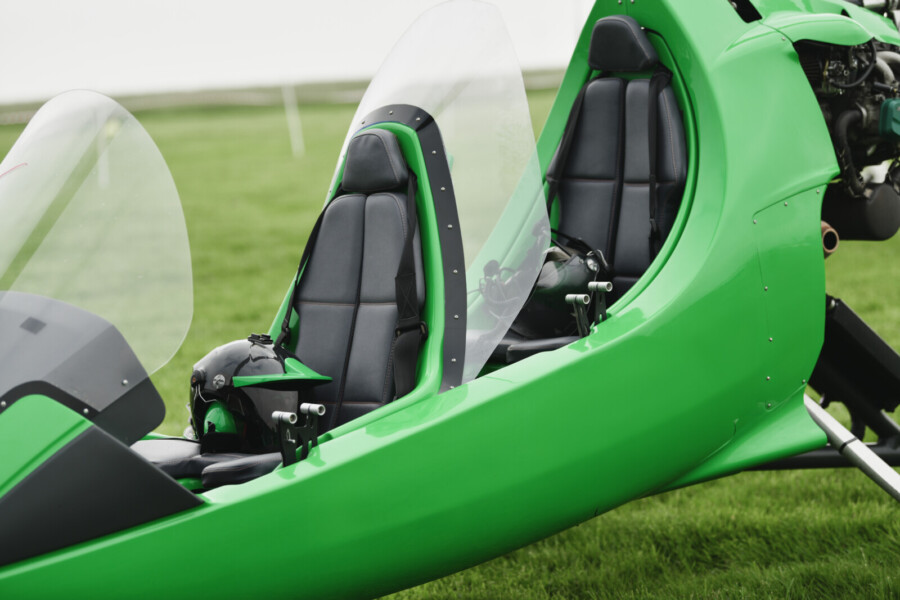

What are the solo flying requirements and privileges?
As a student, you must fly at least 10 hours solo in a gyrocopter before you can obtain your license. Out of these 10 hours, a minimum of 3 hours must be flown away from your home airfield (cross-country). Solo hours can only be flown with the permission and under the supervision of a qualified instructor. Once you obtain a gyrocopter license, you are legally allowed to carry passengers.
What are the ground exams and medical requirements?
Before you can fly solo, you must pass multiple-choice ground exams on Air Law, Meteorology, Navigation, Human Performance, and Gyroplane Technical. The pass mark for these exams is 70%. In terms of medical requirements, you will need to complete a medical self-declaration of health form. The details and guidance notes for this form can be found on the CAA’s website.
What are the costs of gyrocopter training?
The cost of gyrocopter training can vary depending on the model and the training location. On average, you can expect to pay between $200 to $230 per hour of training. It is recommended to inquire with training centers for specific pricing details based on your location and the type of gyrocopter you plan to train on.
What are the online training resources available?
If you are looking for online training resources, the International Association of Professional Gyroplane Training (IAPGT) offers a program that provides comprehensive guidance for gyrocopter training. You can find more details and sign up for the program on their website at iapgt.org.
What are the unique challenges of gyrocopter navigation?
Navigation in a gyrocopter differs from other types of aircraft due to the low altitude and limited space in the cockpit. Pilots must learn to identify landmarks differently and may face challenges with using maps during flight. The unique characteristics of gyrocopters require pilots to adapt their navigation techniques accordingly.
What factors affect the duration of gyrocopter training?
The duration of gyrocopter training can vary depending on individual factors such as learning ability, aptitude, enthusiasm, and dedication. While the minimum training requirements are set, students with different learning speeds and availability may take longer or shorter periods to complete their training. It is important to maintain consistent training sessions without long gaps for optimal progress.
How significant is effective communication and instruction in gyrocopter training?
In gyrocopter training, effective communication and instruction play a crucial role in student success. Different instructors may use different approaches or explanations, and the ability to understand and adapt to individual student needs is key. Personalities, communication styles, and the ability to convey information clearly greatly influence the learning process.





















